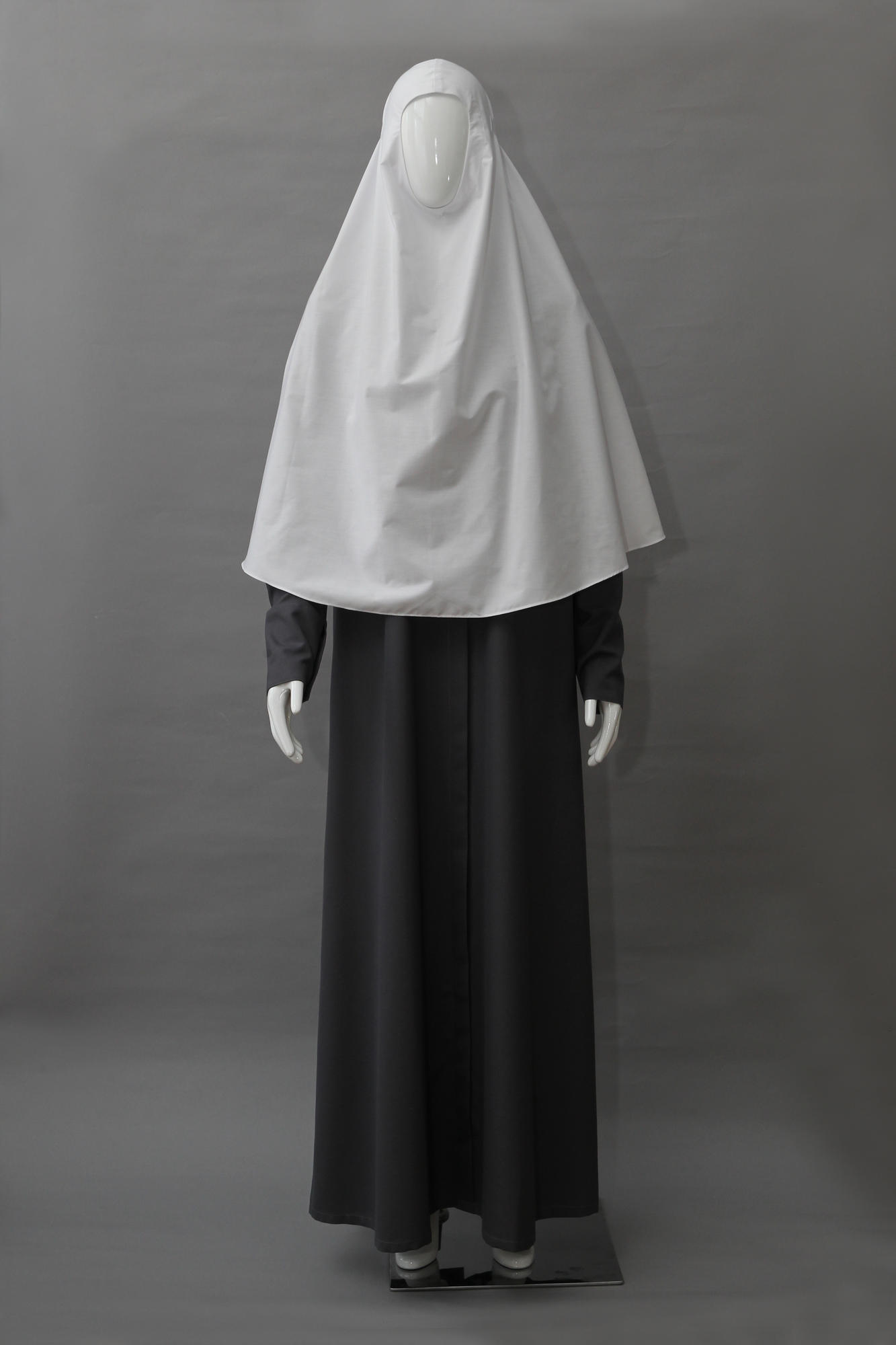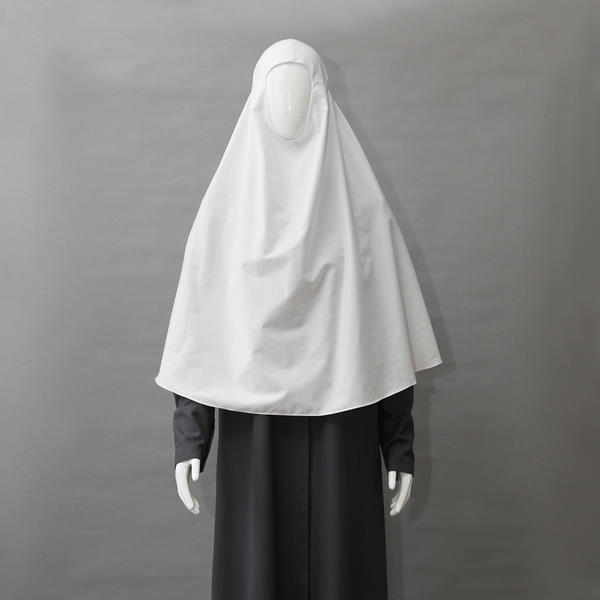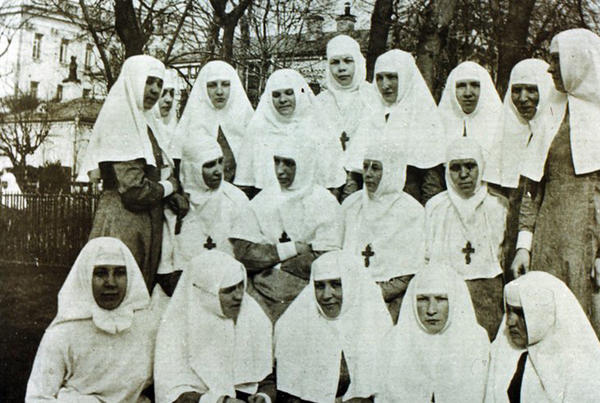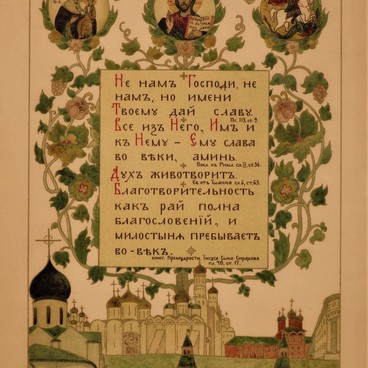The design of the vestment for sisters of mercy of the Marfo-Mariinsky Convent was created by Grand Duchess Elizabeth Feodorovna. She thought it appropriate to abandon the black that was common among nuns and chose dark gray as the new basic color. This was the Grand Duchess’s way to highlight that the service of the sisters of charity of the Marfo-Mariinsky Convent was different from that of nuns: the essence of the veil is about the service of God through private devotion and alienation from the world, while the sisters went out into the world to help those in need. They tended to the sick and the poor and taught at the Sunday school.
Daily vestment of sisters of charity
Время создания
2018
Размер
180x50x25 cm
180x50x25 cm
180x50x25 cm
Техника
Sateen, silk thread, cotton
0
Открыть в приложении#1
Daily vestment of sisters of charity
#9
#5
Daily vestment of the sisters at Marfo-Mariinsky Convent. Source: Sverdlovsk Regional Ethnography Museum
#3
Marfo-Mariinsky Convent had an outpatient clinic and a hospital that was admittedly an exemplary one. The sisters were trained in medicine and psychology. The best doctors of Moscow lectured them, and spiritual fathers talked to them. When the word spread of the exceptional care offered to patients at the convent, Moscow started sending patients in a grave condition to the Convent to have them placed under the care of the sisters.
The Convent was financed by the Grand Duchess, and it cost a lot of money to keep it on a descent level. Some charitable donations came from affluent Muscovites. The Convent had a library, a free canteen, an orphanage for girls with a school. All those who wanted could attend lectures and spiritual readings, as well as spiritual talks on Sundays.
The Convent was financed by the Grand Duchess, and it cost a lot of money to keep it on a descent level. Some charitable donations came from affluent Muscovites. The Convent had a library, a free canteen, an orphanage for girls with a school. All those who wanted could attend lectures and spiritual readings, as well as spiritual talks on Sundays.
#10
Elizabeth Feodorovna lived in the Convent. She tended personally to some grave patients and recited psalms over the deceased. Together with the sisters, she made rounds of the poor districts of Moscow.
In the Khitrov Market area notorious for its slums Elizabeth Feodorovna was a very well-known benefactor, and she was very esteemed. No-one ever dared insult or humiliate her. Locals called her “good mother” or sister Elizabeth. She was popularly believed to be a saint.
#6
During World War I, she extended immense support to the Russian army and wounded soldiers. May fighters lost their limbs and were disabled, but Russian doctors then rarely offered prosthetics. A year into the war, a prosthetic workshop was set up with the money raised by Elizabeth Feodorovna, among others.
The Convent closed in 1926. In the early 1990, the Convent was given back to the Moscow Eparchy. The Convent has now transformed into a stavropegial convent.
The Convent closed in 1926. In the early 1990, the Convent was given back to the Moscow Eparchy. The Convent has now transformed into a stavropegial convent.
#11
Sverdlovsk Regional Ethnography Museum
читать дальшескрыть
00:00
00:00
1x
Daily vestment of sisters of charity
Время создания
2018
Размер
180x50x25 cm
180x50x25 cm
180x50x25 cm
Техника
Sateen, silk thread, cotton
0
Открыть в приложении
Поделиться




